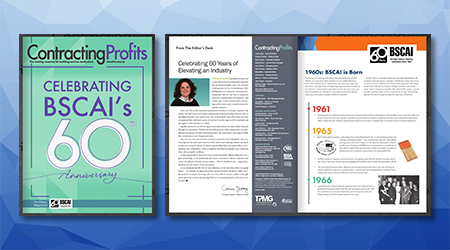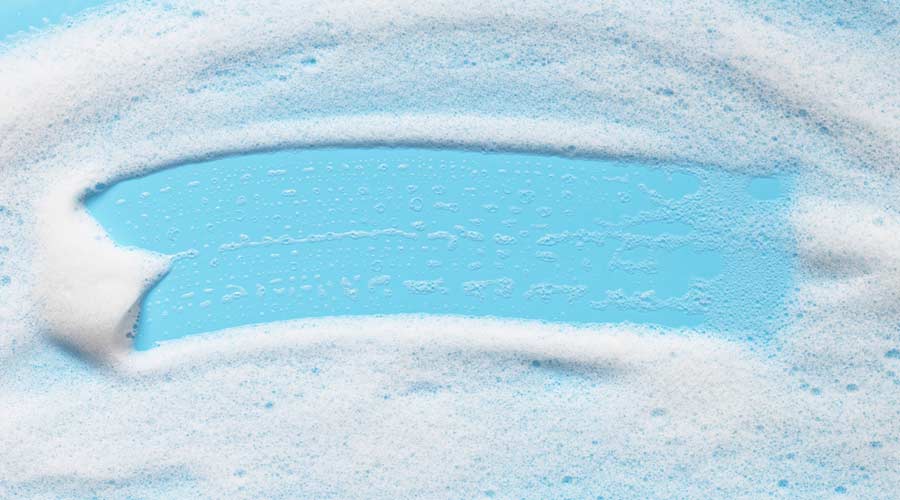
If there’s just one thing Steve Ashkin would like more jan/san distributors to know, it’s that “green” and “sustainable” are not the same.
As the president of The Ashkin Group, Channel Islands Harbor, California, Ashkin has worked around the world to help develop the concept of green cleaning. This experience has taught him that many people use the two terms interchangeably, though he explains they are “100 percent different.” Clearing up the confusion between green and sustainable has thus become one of his larger concerns.
In short, green describes a product and its environmental or health impacts — think an item constructed from recycled or biodegradable materials, or a cleaning spray incorporating nontoxic ingredients. Sustainable takes a broader and deeper look at the company making the product and the manufacturing processes it uses.
In this sense, “Environment, Social, Governance” (ESG) can provide a handy framework for evaluating how sustainable a company is or isn’t. For example, where does the company source its materials, domestically or overseas? What is being done to offset the carbon footprint associated with whatever transportation is required? What oversight exists to ensure labor laws are being followed, especially in developing countries where forced or child labor can be a concern?
Put in this context, it’s entirely possible for a product to be green but not sustainable if coming from a manufacturer that is not operating sustainably. It’s an important distinction for jan/san distributors to understand if they’re going to avoid misrepresenting their products to clients. Still, he continues, green is the “first step on the journey to sustainability.” As such, before even worrying about a company’s sustainability efforts, distributors should strive to incorporate more third-party-certified green products into their inventory.
“This is easy, because there are so many vendors out there who sell these products,” Ashkin says. “Then, distributors can start looking at other things, such as buying green products from companies that are committed to more sustainable processes.”
Growing Demand
The number of green products on the market and the customer appetite for these options is growing. There are several reasons driving this interest. As Keith Schneringer, senior director of marketing JanSan and Sustainability for BradyPLUS in Las Vegas explains, building service contractors (BSCs) see going greener to sharpen their competitiveness, particularly since more of their customers are requesting these types of solutions. And in-house facility cleaning managers often see making this move as more compatible with their overall operational objectives.
“Especially if they are with colleges, universities, municipal government entities, or high-profile venues,” says Schneringer, adding demand is such that green products now comprise over a third of BradyPLUS’ total sales. “We like to tell clients that we are ‘bilingual’ — in other words, we can speak ‘clean,’ and we can speak ‘green.’”
ESG is increasingly being considered by building occupants and custodial employees who not only pay attention to what they’re being exposed to but are additionally focused on seeing their values reflected in the products used to clean and maintain the facility. This has resulted in jan/san distributors fielding more questions from increasingly knowledgeable stakeholders, with procurement decisions often based on green and sustainable criteria, says Dale Franke, vice president of Sales and Marketing for Acme Paper & Supply Co., Inc., in Savage, Maryland.
The company’s inventory reflects its ongoing efforts to meet the growing preference for environmentally responsible solutions. Among other strategies, this includes expanding the number of green-certified cleaning chemicals; offering can liners, towels and tissues derived from post-consumer recycled content; and incorporating biodegradable and compostable food service disposables.
Their customers are also showing interest in green floor pads and brushes, although compared to cleaning solutions and disposables, adoption of these products has been slower. However, as they continue to evolve, demand will likely accelerate. Some advancements noted by Franke and Schneringer include pads and brushes made from recycled as well as post-consumer recycled materials such as plastic bottles, keeping this waste from landfills. Also, green pads and brushes are now lasting longer, says Franke, reducing waste and replacement costs.
“We have also seen floor pads that don’t require chemicals to remove coats of floor finish. These floor pads are definitely showing a labor-saving advantage to floor crews,” says Schneringer, while observing that more facilities have embraced “low-maintenance floors” like concrete and LVT, which don’t necessitate applying finish.
Floor pads, brushes and other cleaning items are also reflecting manufacturer efforts to become more sustainable in their processes, says Franke, pointing to improvements such as closed-loop water systems, waste-heat recovery and lower energy consumption. Manufacturers are also gravitating toward eco-friendlier packaging for these products. For example, some use soy-based inks, cardboard and less plastic wrapping.
Selling the Benefits of Green Floor Pads

 Celebrating BSCAI's 60th Anniversary eBook
Celebrating BSCAI's 60th Anniversary eBook The Down and Dirty on Cleaning in Virus Season
The Down and Dirty on Cleaning in Virus Season How Surfactant Use is Expanding in Commercial Cleaning
How Surfactant Use is Expanding in Commercial Cleaning